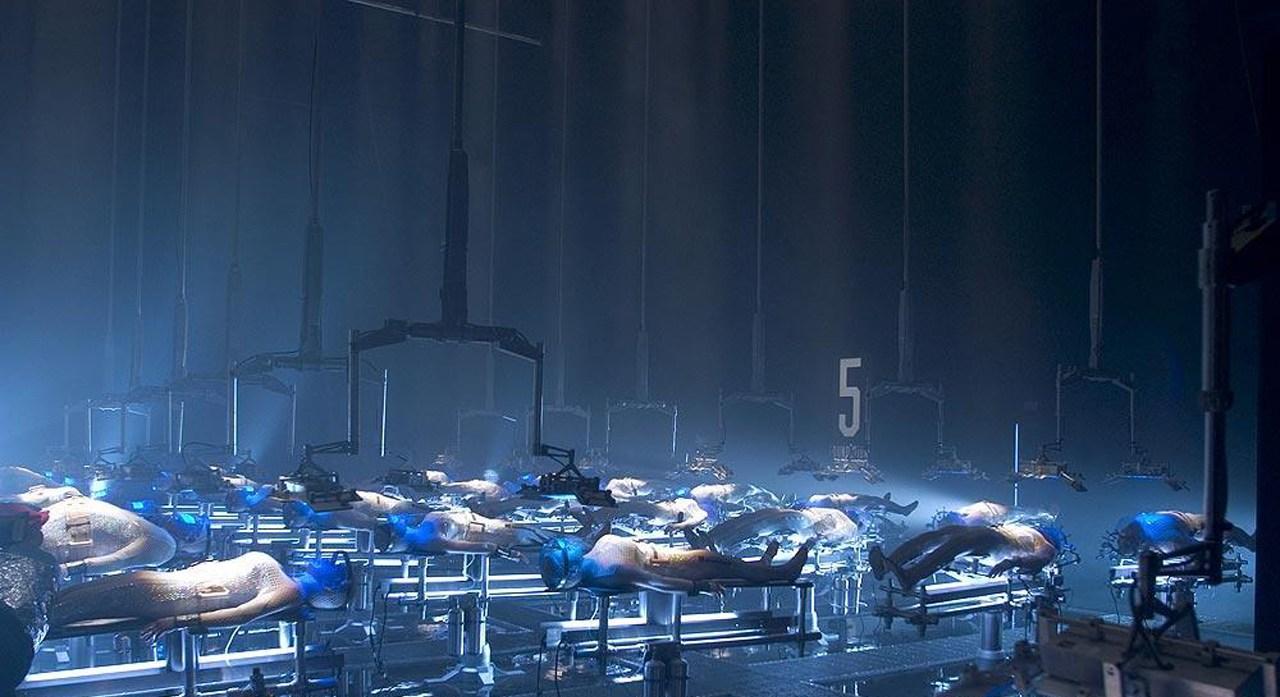introduction:
More than ten years ago, there was a science fiction movie called "Escape from Clone Island", which is about the rich people in order to prevent their own organs from failing with age, at the age of thirty or forty, they use their own body stem cells to clone another self (in addition to the age, the clone is exactly the same as myself), and this clone is locked up in a closed so-called "community" place, and when the rich people's organs fail, such as heart damage or failure, they install the heart of their clones in the "community" on the rich. Avoid allogeneic rejection and survive.

Escape from Clone Island stills
Some people say: cloning a complete individual, and finally killing him, is too inhumane, if you use stem cells to grow only one organ, such as a heart, when the stem cell provider has a heart damage or failure, it is directly replaced with a cultured heart, is it not enough?
<h1 class="pgc-h-arrow-right" data-track="2" > to cultivate a well-functioning in vitro heart, there are many challenges</h1>
In 2016, researchers at the Center for Regenerative Medicine (CRM) at Massachusetts General Hospital tried to grow the heart in vitro and made progress in stages. They re-edited skin cells into stem cells to induce the cultivation of functional heart tissue, and the resulting article was published in the journal Circulation Research.
heart
Using 75 donated ungraftable hearts, they used a "detergent" to strip away the remaining living cells of those hearts, and after removing these cells, they got the perfect scaffold structure to "grow" new cardiomyocytes. The team reported important not only that they successfully cultured heart tissue from stem cells, but also because they were the first to analyze the structure of the heart scaffold after cell removal, which has a phased significance for subsequent studies.
In 2018, a japanese research team found that a gene called "Tbx6" can directly induce the culture of cardiac mesoderm cells from fibroblast cells, and mesoderm cells can differentiate into cardiomyocytes, cardiovascular cells and almost all heart-building cells.
But there are still several challenges to growing a fully functional in vitro heart:
A structural stent needs to be provided to support heart function;
Dedicated cardiomyocytes are supplied and a supportive environment allows these cells to refill scaffolds and form mature tissues to perform complex heart functions.
Therefore, at this stage, it is still difficult to achieve a well-functioning in vitro heart, and it still needs a long way to go, and the response that comes to mind is: can the part of myocardial necrosis caused by heart disease or heart failure be achieved by making functional myocardial tablets?
< h1 class="pgc-h-arrow-right" data-track="2" > try to treat heart failure and myocardial necrosis with heart muscle patches</h1>
If a patient develops acute myocardial infarction, although symptoms can be improved after thrombolytic and stent surgery, part of the patient's myocardium will still die due to ischemia and hypoxia, and some myocardial necrosis will occur. If there is a large area of myocardial necrosis, it can be treated by organ transplantation, but there are problems such as allogeneic rejection and lack of donors, and the new solution is to culture myocardial patches by autologous cells, and attach them to the affected area of necrotic myocardium through surgery to achieve the purpose of repairing myocardium and cardiovascular function, which can solve the problem of allogeneic rejection and autologous cells can also be easily obtained.
myocardium
First of all, let's introduce what myocardial patch is: myocardial patch is a flaky engineered heart tissue prepared by tissue engineering means, which has a cell layer structure, which can improve the retention and survival rate of cells after implantation. We know that the heart is made up of many cell types, such as cardiomyocytes, connective tissue cells, and vascular endothelial cells. Together, these cells provide a steady stream of oxygenated blood to the rest of the body.
Japan's regenerative medicine technology is far ahead in the world, and it has realized the clinical treatment of cell membrane regeneration heart function technology. The method they studied to obtain myocard patches: first take a small piece of muscle from the back of the patient's calf, extract muscle bud cells from the muscles, culture cells in vitro and make a cardiomyocyte diaphragm, and finally surgically attach the cell diaphragm to the patient's heart affected area, and the cardiomyocyte diaphragm will automatically repair the myocardium and cardiovascular function and restore its function.
How to obtain myocardial patches
<h1 class="pgc-h-arrow-right" Data-track="43" when can > myocardial patch be used clinically? </h1>
Engineered myocardial patch technology plays an important role in promoting myocardial tissue regeneration, reshaping the shape of the diseased heart and improving heart function, but before myocardial patch is widely applied to the human heart, a lot of practical and clinical research is still needed to ensure safety. I believe that in the near future, the clinical use of myocardial patches to treat heart failure or myocardial necrosis will surely appear!
Reference Articles:
Instead of heart transplantation - Japanese myocardial and cardiovascular regeneration therapy ———— Japan Medical Network;
Advances in the Clinical Application of Biological Meshes: Www.shengwuyixue.com advances in modern biomedicine;
Observation on the Effect of Composite Myocardial Patch on Myocardial Repair of Infarction in Mice——Shandong Medicine, Vol. 55, No. 14, 2015;
Engineered myocardial patch – how far away is it from entering the clinic;
Autologous-derived adipose stem cell construction engineered myocardial patch to repair left ventricular wall tumor in rats- Journal of Cardiovascular and Pulmonary Vascular Diseases, Vol. 39, No. 9, September 2020;